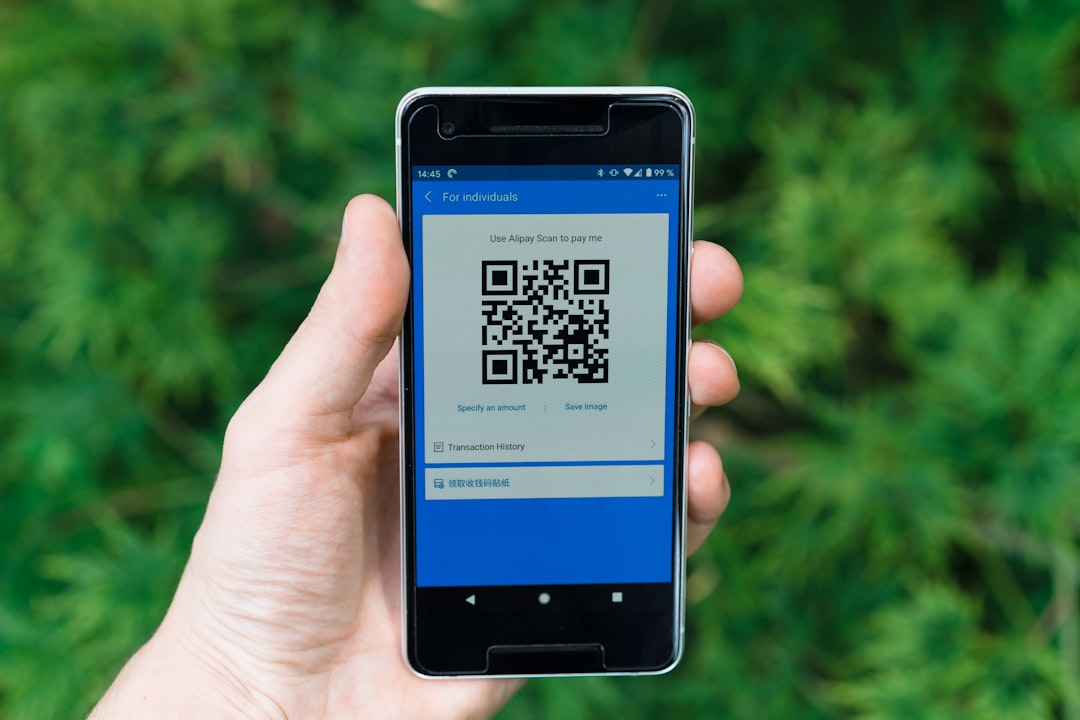In an era where our financial transactions are increasingly carried out with the click of a button, the specter of fraud looms larger than ever. It’s a shadowy figure in the digital alleyways where our money changes hands, and it’s not just looking for the unwary—it’s looking for anyone with a bank account. “Spotting Potential Fraud: How to Protect Yourself and Your Finances” is more than just a guide; it’s a financial self-defense class designed for the digital age.
Every day, we hear stories of savvy scammers who’ve concocted new ways to pilfer our pennies. They’re crafting emails that mimic our banks, making phone calls that seem as legitimate as any customer service, and designing scams that could fool even the most cautious among us. But fear not, because knowledge is power—and the right information can turn the tables on these digital desperados.
In this blog, we’ll arm you with the essential tools and tactics to identify the red flags of fraud. We’ll guide you through the labyrinth of scams, from the classic schemes that still snag the unwary to the latest digital deceptions. By the end of this journey, you’ll not only be able to spot potential fraud but also know the steps to take to keep your finances fortified against the relentless attempts of scammers. So, buckle up and prepare to become a sentinel of your own savings, a guardian of your transactions, and a champion of your financial well-being.
What is Fraud?
Fraud is a deliberate deception or misrepresentation used to gain an unfair advantage or financial gain. It can take many forms, including identity theft, credit card fraud, and investment scams.
Fraudsters often use various tactics to trick individuals into giving them personal or financial information, such as posing as a legitimate company or government agency, sending fake emails or text messages, or creating fake websites.
Signs of Potentially Fraudulent Activity
Vigilance is your staunchest ally in the battle against financial fraud. Recognizing the signs of potentially fraudulent activity can mean the difference between safeguarding your assets and falling victim to a scam. Here are some red flags to watch out for:
- Unsolicited Communications: Be wary of unexpected calls, emails, or letters claiming to be from banks, government agencies, or other organizations requesting personal information, payment, or account details.
- Too-Good-To-Be-True Offers: If an offer seems too lucrative, such as an investment promising high returns with little or no risk, it’s likely a scam. Legitimate investments always come with risk.
- Requests for Immediate Action: Fraudsters often try to create a sense of urgency, pressuring you to act quickly without time to think or consult others. They may say your account will be closed or you’ll face legal action if you don’t respond immediately.
- Unfamiliar Transactions: Review your bank and credit card statements regularly. Unrecognized charges, however small, can be a sign of fraudulent activity.
- Requests for Confidential Information: Be cautious if you’re asked to provide sensitive information like your Social Security number, bank account details, or passwords. Legitimate organizations have secure methods for requesting such information and do not do so impulsively.
- Spelling and Grammar Mistakes: Professional communications should be free of errors. Scammers often make mistakes in emails or letters that can tip you off to a scam.
- Mismatched Email Addresses: The sender’s email address should match the organization they claim to represent. A mismatched or suspicious-looking email domain is a common hallmark of a scam.
- Unsecured Websites: When shopping or entering any personal information online, check for a secure connection indicated by “https://” and a padlock icon in the browser address bar.
- Pressure to Use Unusual Payment Methods: Scammers often ask for payment via wire transfer, gift cards, or other untraceable methods. Legitimate businesses do not typically ask for these payment methods.
- Changes to Financial Documents: Unexpected or unauthorized changes to wills, trusts, or other financial documents can be a sign of fraud, especially targeting the elderly.
- Inconsistencies in Stories or Offers: If the details of an offer or request change or don’t add up, it’s likely a scam. Scammers may slip up on the narrative they’ve constructed.
- Unverified Identity: If someone contacts you claiming to be a representative of a company or government agency, verify their identity by contacting the organization directly through official channels.
By staying alert to these signs, you can act swiftly to protect yourself. Always remember, when in doubt, it’s better to err on the side of caution and verify everything independently before proceeding with any transaction or disclosure of personal information.
Unexpected Charges or Transactions

Unexpected charges or transactions on your financial statements can be a glaring sign of fraudulent activity. It’s crucial to recognize and address these anomalies promptly to safeguard your finances. Here’s what you need to know about these unwelcome surprises and how to handle them:
Identifying Unexpected Charges:
- Review Statements Regularly: Make it a habit to check your bank and credit card statements frequently. With digital access to accounts, you can do this as often as daily.
- Set Up Alerts: Most banks and credit card companies offer free transaction alerts via text or email. These can notify you of any activity in your account, allowing you to spot unauthorized transactions as soon as they occur.
- Small Charges Matter: Sometimes, fraudsters test the waters with small amounts to see if you’re paying attention. Even minimal charges that you don’t recognize should be investigated.
Responding to Unexpected Transactions:
- Contact Your Bank or Credit Card Issuer: If you spot a transaction you didn’t authorize, reach out to your financial institution immediately. They can help you confirm whether the charge is fraudulent.
- Dispute Unauthorized Charges: You have the right to dispute any unauthorized transactions. Your bank or credit card issuer can guide you through the process, which typically involves filling out a dispute form.
- Freeze or Cancel Your Cards: If there’s clear evidence of fraud, you may need to freeze your card or cancel it and get a replacement to prevent further unauthorized charges.
- Change Online Passwords and PINs: If your account has been compromised, change your online account passwords, PINs, and any other security details.
- Monitor Your Credit Report: After encountering fraud, monitor your credit report for any new, unauthorized accounts. You’re entitled to free credit reports from the major credit bureaus, and you should take advantage of this.
- File a Police Report: If the situation warrants, file a report with your local police. This can be helpful if you need to provide proof of fraud to your financial institution or credit bureaus.
- Consider a Fraud Alert or Credit Freeze: Placing a fraud alert on your credit files makes it harder for someone to open new accounts in your name. A credit freeze goes further, completely restricting access to your credit reports.
Preventive Measures:
- Use Secure Payment Methods: When shopping online, use secure payment methods like credit cards or reputable payment services that offer fraud protection.
- Be Cautious with Personal Information: Don’t share personal financial information over the phone or online unless you initiated the contact and you’re sure the entity is legitimate.
- Keep Software Updated: Ensure that all your devices have the latest security software, web browsers, and operating systems. This is one of the best defenses against viruses, malware, and other online threats.
By staying vigilant and taking immediate action upon noticing unexpected charges, you can minimize the damage and prevent further fraudulent activity. Remember, in the digital age, your financial security is as much about prevention as it is about prompt and decisive action when something goes awry.
Suspicious Emails or Text Messages
Suspicious emails or text messages, often referred to as phishing attempts, can be cleverly disguised to look like they come from legitimate sources. They are designed to trick you into giving away personal information, such as passwords, account numbers, or Social Security numbers. Here’s how to spot them and what actions you should take:
Spotting Suspicious Messages:
- Unexpected Requests: Be cautious of messages asking for sensitive information, especially if they create a sense of urgency or offer something that seems too good to be true.
- Generic Greetings: Phishing attempts often use generic greetings like “Dear Customer” instead of your real name.
- Sender’s Email or Number: Check the sender’s email address or phone number. If it doesn’t match the organization’s official contact information, it’s likely a scam.
- Links and Attachments: Be wary of emails or texts that include links or attachments, especially if they ask you to enter personal details afterward. Hover over links to see the actual URL before clicking.
- Spelling and Grammar Errors: Legitimate companies usually have messages proofread for professionalism. Poor grammar and spelling can be a giveaway of a phishing attempt.
- Mismatched URLs: If the email contains a hyperlink, hover over it without clicking. If the actual URL does not match the displayed text or the email’s supposed sender, it’s likely fraudulent.
Taking Action:
- Do Not Respond or Click Links: If you receive a suspicious email or text, do not reply, click on any links, or open any attachments.
- Verify Independently: Contact the company using a phone number or website address you know is real, not from the information in the message.
- Use Multi-Factor Authentication: Protect your accounts with multi-factor authentication, which requires two or more credentials to log in, adding an extra layer of security.
- Report Phishing Attempts: Forward phishing emails to the Anti-Phishing Working Group at reportphishing@apwg.org. If you receive a phishing text, forward it to SPAM (7726).
- Keep Your Systems Secure: Ensure your operating system, antivirus software, and email filters are up to date to help detect and block suspicious activities.
- Educate Yourself and Others: Stay informed about phishing techniques. The more you know about these scams, the less likely you are to become a victim.
By being alert to these signs and knowing the appropriate actions to take, you can protect yourself from the potentially damaging effects of phishing scams. Always remember, when in doubt, it’s better to err on the side of caution and double-check the authenticity of any communication that asks for personal information.
Unusual Account Activity
Unusual account activity can be a telltale sign of potential fraud or identity theft. It’s important to recognize what constitutes unusual activity and to act promptly to protect your financial health. Here’s what you should look out for and how to respond:
Recognizing Unusual Account Activity:
- Unrecognized Transactions: Charges or withdrawals you don’t remember making, especially those for unusual amounts or from unfamiliar places, should raise a red flag.
- Failed Login Alerts: Many financial institutions send alerts when there’s a failed attempt to log into your account. Multiple failed attempts could indicate someone else is trying to gain access.
- New Accounts You Didn’t Open: Receiving notifications or welcome messages for new accounts in your name that you did not open is a serious sign of identity theft.
- Missing Mail or Email: If expected bank statements or bills stop arriving, it could mean someone has changed your account information to hijack your accounts.
- Account Balance Discrepancies: If your account balances don’t line up with your records or there are unexplained overdrafts, investigate immediately.
Steps to Take if You Notice Unusual Activity:
- Contact Your Financial Institution: Reach out to your bank or credit card company immediately to report suspicious activity. They can help you secure your account and track down any fraudulent transactions.
- Change Your Passwords: Update your account passwords and any security questions, especially if they could have been compromised.
- Review Your Credit Report: Check your credit reports for any inquiries or new accounts you don’t recognize. You’re entitled to free reports from the three major credit bureaus once a year.
- Consider a Credit Freeze: If you suspect identity theft, a credit freeze can prevent new accounts from being opened in your name without your consent.
- File a Fraud Report: Report the incident to the proper authorities, which may include your local police department and the Federal Trade Commission through their IdentityTheft.gov website.
- Monitor Your Accounts: Keep a close eye on your financial statements and credit report going forward. Quick detection of any further unusual activity can help mitigate the damage.
- Set Up Account Alerts: If you haven’t already, configure alerts for your financial accounts. These can notify you of any transactions, password changes, or other specific account activities.
By staying vigilant and responding quickly to unusual account activity, you can help protect yourself from the repercussions of financial fraud and identity theft. Remember, monitoring your financial accounts and personal information should be a regular part of your financial routine.
Calls from Unknown Numbers
Receiving calls from unknown numbers can be an unsettling experience, especially in an age where such calls are often the front line for various scams and fraudulent schemes. Here’s how to handle these calls and protect yourself:
Identifying Suspicious Calls:
- Robocalls: Automated calls that deliver a pre-recorded message, often about debts, prizes won, or a problem with one of your accounts, are typically scams.
- Pressure Tactics: Callers who insist you must act immediately to avoid serious consequences are often attempting to scam you.
- Requests for Personal Information: Legitimate organizations will not call you out of the blue to ask for sensitive information like your Social Security number, bank account details, or credit card numbers.
- Calls Claiming to be Government Agencies: Scammers often pretend to be from the IRS or other government agencies to intimidate you into paying fictitious debts or providing personal information.
How to Respond to Unknown Calls:
- Do Not Provide Personal Information: Never give out personal information over the phone unless you initiated the call to a number you know is genuine.
- Hang Up and Call Back: If the caller claims to be from a legitimate company or government agency, hang up and call the number on your account statement, in the phone book, or on the official website.
- Use Caller ID and Call Blocking: Utilize your phone’s caller ID to screen calls and set up call blocking to prevent certain numbers from reaching you.
- Register with the National Do Not Call Registry: This can reduce the number of telemarketing calls you receive. Legitimate telemarketers consult this list to avoid calling both landline and wireless phone numbers on the list.
- Report Scam Calls: If you receive a scam call, report it to the FTC at donotcall.gov or by calling 1-888-382-1222.
- Be Skeptical: Always approach unsolicited calls with skepticism, even if they seem legitimate. Scammers can spoof phone numbers to make it appear as if they are calling from a legitimate company or government agency.
- Educate Yourself: Familiarize yourself with the common types of phone scams so you can recognize the warning signs.
By taking these precautions, you can significantly reduce the risk of falling victim to a phone scam. Remember, it’s always better to err on the side of caution when dealing with unknown callers.
How to Detect and Prevent Fraud
Detecting and preventing fraud is an essential skill in today’s digital world, where personal and financial information is frequently transacted online. Here are some strategies to help you stay ahead of fraudsters:
Monitor Your Accounts Regularly

One of the best ways to detect fraud is to monitor your accounts regularly. Check your bank and credit card statements at least once a week to ensure that all transactions are legitimate. If you notice any suspicious activity, report it to your bank or credit card company immediately.
Use Strong Passwords
Using strong, unique passwords for all your online accounts can help prevent fraud. Avoid using the same password for multiple accounts, and consider using a password manager to generate and store complex passwords.
Be Cautious of Suspicious Emails or Messages
As mentioned earlier, phishing emails and text messages are a common tactic used by fraudsters. Be cautious of any messages that ask for personal or financial information, and never click on links or open attachments from unknown senders.
Keep Your Personal Information Secure

Your personal information, such as your social security number, date of birth, and credit card numbers, is valuable to fraudsters. Keep this information secure and only provide it when necessary. Be cautious of sharing personal information on social media or other online platforms.
Use Fraud Detection and Prevention Tools
Many banks and credit card companies offer fraud detection and prevention tools to their customers. These tools can help identify suspicious activity and prevent fraud before it happens. Be sure to take advantage of these tools if they are available to you.
What to Do if You Become a Victim of Fraud
If you believe you have become a victim of fraud, it’s essential to act quickly to minimize the damage. Here are the steps you should take:
Contact Your Bank or Credit Card Company
The first thing you should do is contact your bank or credit card company to report the fraudulent activity. They can freeze your accounts and issue new cards to prevent further unauthorized transactions.
Place a Fraud Alert on Your Credit Report
Placing a fraud alert on your credit report can help prevent fraudsters from opening new accounts in your name. Contact one of the three major credit bureaus (Equifax, Experian, or TransUnion) to place a fraud alert on your credit report.
File a Report with the FTC

You should also file a report with the Federal Trade Commission (FTC) to document the fraud and receive guidance on what to do next. You can file a report online at ftc.gov/complaint or by calling 1-877-FTC-HELP.
Monitor Your Credit Report
Keep an eye on your credit report for any new accounts or inquiries that you didn’t authorize. You can request a free credit report from each of the three major credit bureaus once a year at annualcreditreport.com.
Fraud Prevention Tips for Businesses
Fraud prevention is crucial for businesses of all sizes to protect their assets, reputation, and customer trust. Here are some practical tips for businesses to help prevent fraud:
- Employee Education: Train your employees on the importance of fraud prevention. Ensure they understand the common types of fraud and the procedures in place to prevent them.
- Strong Internal Controls: Implement robust internal controls, including segregation of duties, so no single employee has control over all parts of a financial transaction.
- Regular Audits: Conduct regular, surprise audits and have an external auditor review your books annually. This can deter employees from committing fraud and can catch fraud early if it does occur.
- Secure Information Systems: Use firewalls, anti-virus software, and secure networks to protect your business from cyber threats. Regularly update your systems to patch any security vulnerabilities.
- Background Checks: Perform thorough background checks on new employees, especially those in positions of trust and financial responsibility.
- Monitor Business Accounts: Keep a close eye on business banking transactions. Use banking services that allow for transaction alerts and implement a system to review and approve transactions regularly.
- Fraud Prevention Policies: Develop clear policies regarding fraud and communicate them to your employees. Make sure everyone knows the consequences of fraudulent activities.
- Verify Invoices: Scrutinize invoices for irregularities and confirm their legitimacy before processing payments. Be wary of invoices that do not match purchase orders or that come from unfamiliar vendors.
- Protect Customer Data: Safeguard customer information with encryption and secure data storage practices. Comply with all relevant privacy regulations to maintain customer trust.
- Use Secure Payment Methods: Encourage the use of secure payment methods and be cautious with checks, as they can be easily altered or forged.
- Whistleblower Program: Establish a whistleblower program that allows employees to report suspected fraud anonymously.
- Vendor Verification: Vet new vendors thoroughly and monitor existing ones. Establish strong contracts and verify that goods or services were received before issuing payment.
- Limit Access: Restrict access to sensitive information and financial systems to only those employees who need it to perform their job duties.
- Physical Security: Implement physical security measures to prevent theft of company assets, including secure storage for checks and sensitive documents.
- Cybersecurity Insurance: Consider obtaining cybersecurity insurance to mitigate losses in the event of a cyberattack or data breach.
By taking these steps, businesses can create a strong foundation for fraud prevention and create an environment where integrity is part of the corporate culture. Remember, the cost of preventing fraud is often much less than the cost of the fraud itself, both in financial terms and in terms of reputation.
Educate Your Employees

Educate your employees on how to spot potential fraud and what to do if they suspect fraudulent activity. This can help prevent fraud from occurring and minimize the damage if it does happen.
Use Fraud Detection and Prevention Tools
Just like individuals, businesses can also take advantage of fraud detection and prevention tools offered by banks and credit card companies. These tools can help identify suspicious activity and prevent fraud before it happens.
Monitor Your Accounts Regularly
As with personal accounts, it’s essential to monitor your business accounts regularly. Keep an eye on your bank and credit card statements and report any suspicious activity immediately.
Conclusion
Fraud is a serious threat that can have a significant impact on individuals and businesses. By knowing the signs of potentially fraudulent activity and taking steps to prevent fraud, you can protect yourself and your finances from falling victim to scammers.
Remember to monitor your accounts regularly, use strong passwords, be cautious of suspicious emails or messages, and keep your personal information secure. If you do become a victim of fraud, act quickly to minimize the damage and prevent it from happening again in the future.
References
For businesses seeking to bolster their fraud prevention strategies with resources and references specific to the United States, the following list provides a starting point:
- Federal Trade Commission (FTC) – Business Section
- www.ftc.gov/tips-advice/business-center
- The FTC offers guidance on protecting your business from scams, securing sensitive data, and understanding privacy law.
- U.S. Small Business Administration (SBA) – Manage Your Business
- www.sba.gov/business-guide/manage-your-business/protect-your-business
- The SBA provides resources for managing and protecting your business, including information on preventing fraud and cyber threats.
- Internal Revenue Service (IRS) – Small Business and Self-Employed Tax Center
- www.irs.gov/businesses/small-businesses-self-employed
- The IRS offers resources for small businesses on tax-related fraud and how to report suspected tax fraud activity.
- U.S. Securities and Exchange Commission (SEC) – Enforcement Division
- www.sec.gov/enforce
- The SEC’s Enforcement Division publishes information on securities fraud and how to report it.
- Financial Industry Regulatory Authority (FINRA) – Small Firm Resources
- www.finra.org/small-firms
- FINRA provides regulatory and compliance resources for small firms, including fraud prevention.
- Cybersecurity & Infrastructure Security Agency (CISA)
- www.cisa.gov
- CISA offers cybersecurity resources for businesses, including risk assessments and best practices for protecting digital assets.
- National Cyber Security Alliance (NCSA) – CyberSecure My Business™
- www.staysafeonline.org/cybersecure-business
- The NCSA provides tips and resources for businesses to improve their cybersecurity posture and protect against fraud.
- Better Business Bureau (BBB) – Scam Tracker
- www.bbb.org/scamtracker
- The BBB’s Scam Tracker allows businesses to report scams and view others that have been reported to better understand current fraudulent activities.
- American Institute of Certified Public Accountants (AICPA) – Forensic and Valuation Services
- www.aicpa.org/interestareas/forensicandvaluation.html
- The AICPA offers resources on forensic accounting and fraud prevention.
- Association of Certified Fraud Examiners (ACFE)
- www.acfe.com
- The ACFE provides anti-fraud training and certification, as well as resources for businesses to detect and prevent fraud.
These resources offer valuable information and tools that can help U.S. businesses understand the landscape of fraud prevention and take proactive steps to protect themselves against potential threats.


